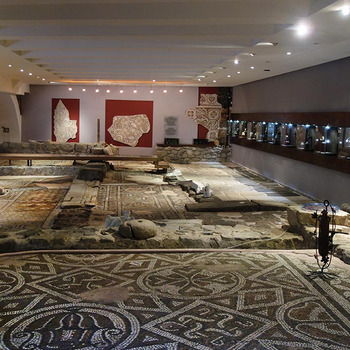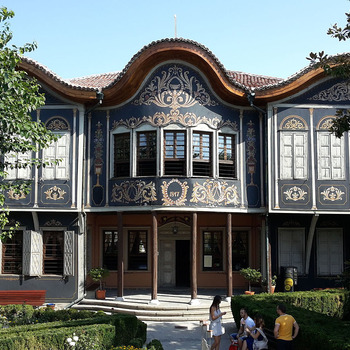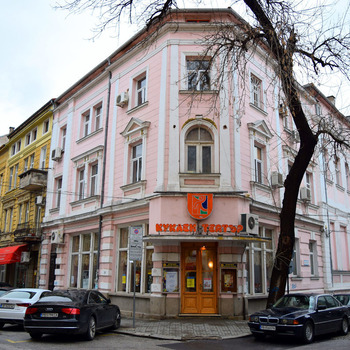Imaret Mosque
Overview
Shahbedin's Imaret Mosque is located in the central part of Plovdiv, near the pedestrian bridge over the Maritsa River. Its architecture is typical of this type of building - unplastered, red brick. The mosque was built in 1444 - 1445 by the Rumelia Beylerbey Shahbedin Pasha, son of the conqueror of Thrace Lala Shahin. Local legend has it that a Christian temple used to stand on this site. Proof of this is the cellular structure, reminiscent in some areas of the typical structure of the Second Bulgarian Kingdom. The mosque has an open vestibule along its entire length with 5 pointed arches. The central nave is square, with a dome supported by an octagonal drum. One part of the ships are rowing boats and the other part are single-masted sailing ships. The drawings also depict fish, dolphins, sharks, exotic animals, as well as warriors and bloody battles. The smaller side ships are also square. The minaret has a meandering brick bandage and is considered an architectural masterpiece. After the 17th century, the inner walls of the mosque were repeatedly decorated with frescoes, of which there are preserved fragments. In the courtyard of the mosque there is a tomb (tomb) in which Shahbedin Pasha is buried.
Along with the mosque and the tomb, Shahbedin built an inn, an imaret (kitchen for the poor), a hammam (bathroom), a mekteb and a medrese (schools). In 1879-1885 the East Rumelia Regional Assembly met in the bathroom building. It was demolished in 1931 and in its place today is the building of the Zografski Monastery. The waqf founded by Shahbedin was supported by the rent of a large number of houses and shops in Edirne and Malgara, by the taxes of five Turkish villages near Malgara and the villages of Kuklen, Voden (now Asenovgrad district), Mavrovo and Novo Selo, as well as by two large rice fields. 58 images of various vessels are registered in the temple. In the 1960s, the building was mainly restored by the National Institute of Cultural Monuments. Since 1992, it has been a functioning house of prayer again. The mosque owes its name to the associated imaret. For more than four centuries, they "distributed hot food and bread daily to the poor, of whatever faith."
Recommended
- Regional Archaeological Museum - Plovdiv
- Regional Museum of Natural History - Plovdiv
- Maltepe Open Air Museum
- The old town of Plovdiv - an architectural reserve


 Bulgarian
Bulgarian Romanian
Romanian



